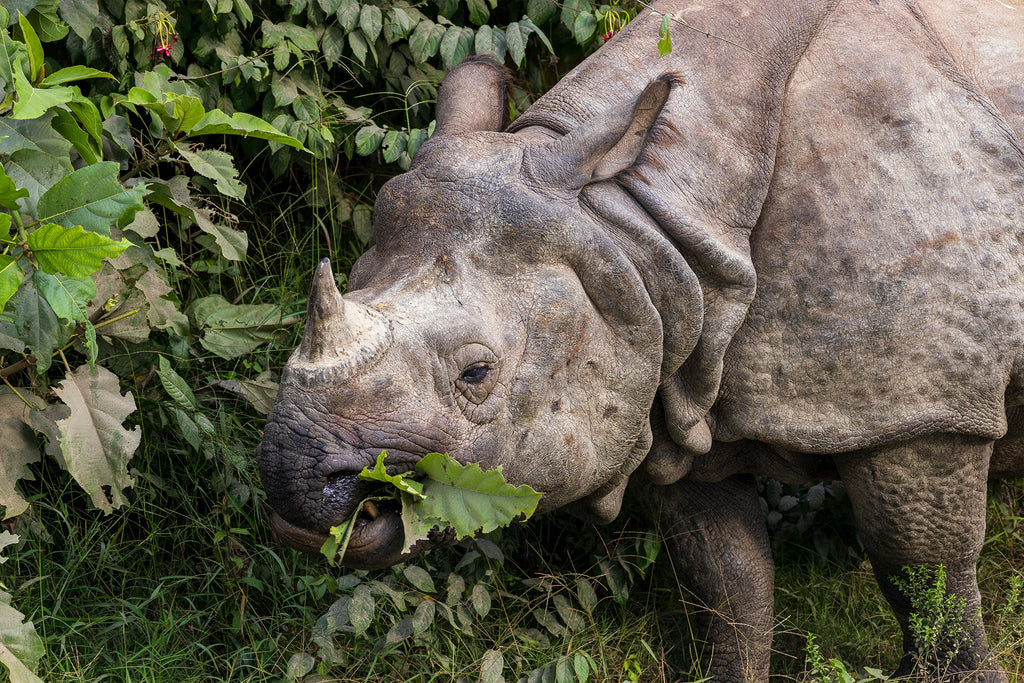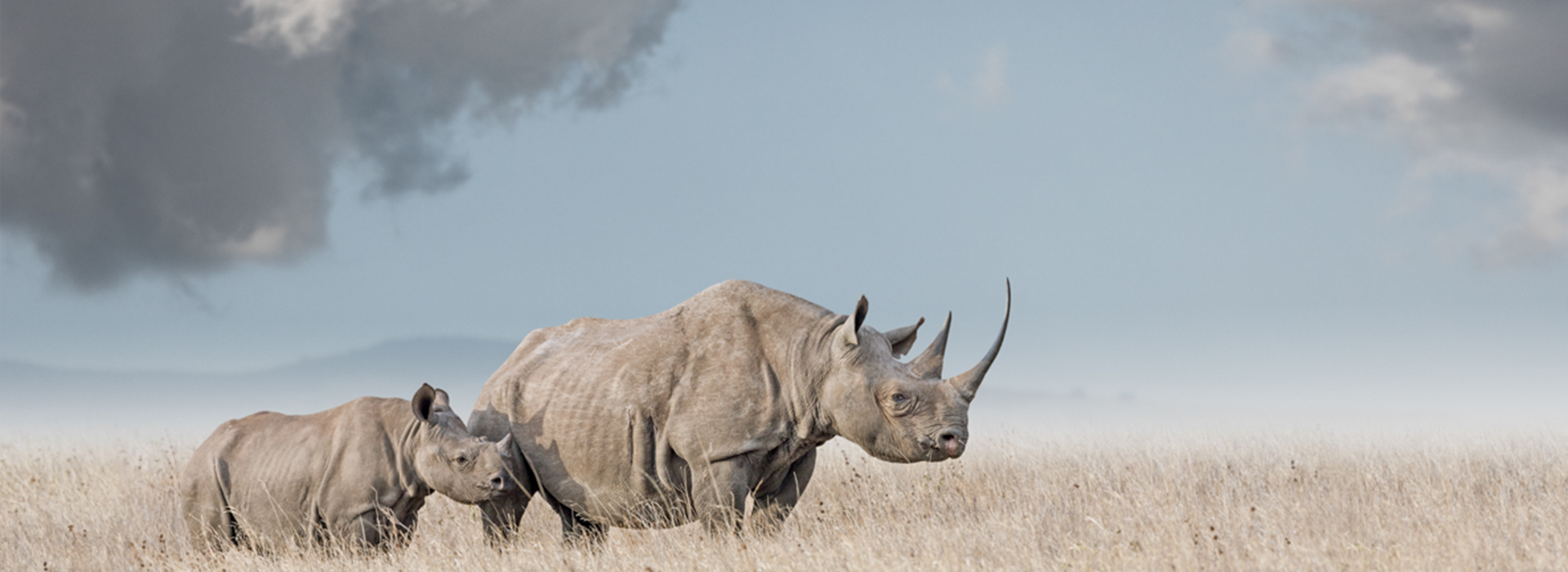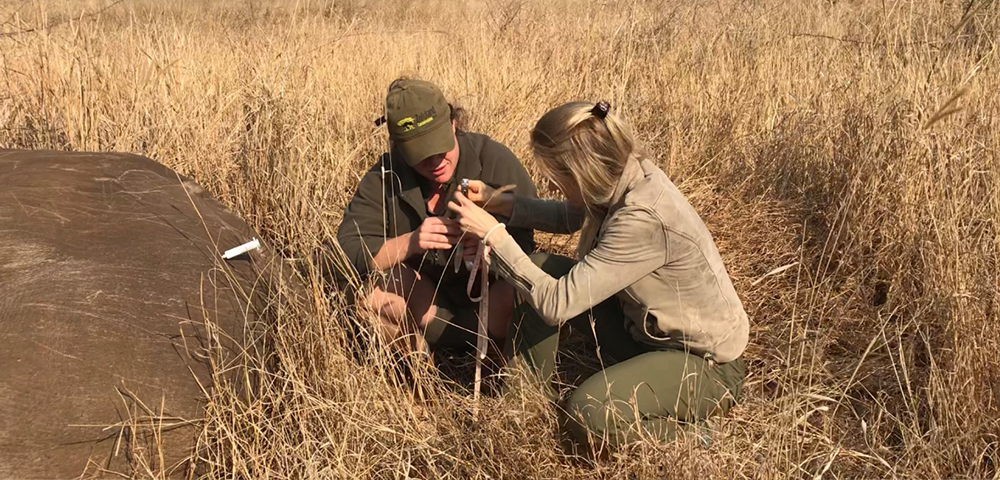Indian rhinoceros | Population, Habitat, & Facts

Common Names
Greater one-horned rhinoceros: referring to the single large horn Indian and/or Nepalese rhinoceros: referring to the species’ range
Scientific name and Origin
Rhinoceros unicornis was derived from the Greek word “rhino”, which means “nose” and “ceros”, which means “horn”. The latter “unicornis” is derived from the Latin word “uni”, which means “one” and “cornis”, which means “horn”.
Biology
The Indian or Nepal rhino is also known as a greater one-horned rhino, a threatened species of rhino that wallows in water and can be places where several individuals meet, as a kind of social gathering.
Afterward, they will separate again. Covering their skin in mud aids thermo-regulation by preventing overheating, and also suffocates any ticks or parasites that are embedded on the surface of the skin.

Location
India and Nepal.
Habitat
Tropical and Subtropical Grasslands, Savannas, and Shrublands.
Physical characteristics
Size
The Indian rhino is the second biggest of the rhino species, beaten only by the white rhino. They weigh between 4-6,000 pounds (1,800-2,700 kg). the Greater one-horned rhino stands at around 1.75-2 m and is 3-3.8 m long.
Skin
They have an ashy gray, hairless skin that develops thick folds, resembling armor plating. The Several prominent folds of skin protect their neck. Their skin is about 4 cm. thick. The subcutaneous fat is 2-5 cm thick and well supplied with blood; this helps thermo-regulation, meaning that the animal can regulate its body temperature in varying weather conditions. Between the folds, around the stomach, the inner legs, and the facial area, the skin is rather soft and thin.
Teeth
Although their horns may not be as long as other well-known species of rhino, Greater one-horned rhinos have very long lower incisor teeth that can be used in fighting to inflict deep wounds. A male’s teeth can grow up to 8 cm long. Over time chewing the teeth will reduce and become similar to plates. This is why adult rhinos can't feed properly.
The upper lip is semi-prehensile.
Horn
The Indian rhino or Greater one-horned rhino as the name implies has only one horn, which is around 20-61 cm long and weighs about 3 kg. The horn structure is the same as the hooves of horses and tends to regrow if broken off. Contrary to popular opinion It is not used for fighting but rather to search for food and to forage for roots.
Hair
The Indian rhino has hair at the tip of its tail, around the ears, and eyelashes.
Life span
Greater one-horned rhinos live up to 30-45 years in the wild. Those that were kept in captivity have lived a maximum of 40 years before passing on.
Behavior
Greater one-horned rhinos sub-adults and adult males are solitary, except when they wallow in aquatic areas or during grazing. The males have loosely defined territories that are not well-defined and often overlap.
The Indian rhinos are very good swimmers and can dive and feed underwater. They enjoy the cool wetness of water in lakes and riverine habitats. They also have a good sense of smell and hearing but can not see very well. They are rather short-sighted. This specie of rhinos are very agile and can run up to 40 km/h despite their bulky shape and size.
Female Indian rhinos are more social. Males maintain loosely-defended territories. Females become sexually mature at 5-7 years old, while males mature at about 10. Breeding occurs throughout the year, with a gestation period of 15-16 months. The single offspring remains with the mother until the birth of her next calf, usually after 1 to 3 years.
The Greater one-horned rhinos also tend to use the same paths, which they mark by a scent gland on the bottom of their feet which usually had their dung and urine stamped on it.

Diet
The Indian rhino is majorly a grazer. Its diet consists almost entirely of grasses, but it sometimes eats leaves, branches, fruit, and even aquatic plants. It feeds on about 183 different species of plants but has a preference for grass, fruits, leaves, and branches of trees and shrubs, submerged and floating aquatic plants, and crops. Greater one-horned rhinos eat on average 1% of their body weight daily and are known to swim for their food.
Geographical location
The greater one-horned rhino lives in northern India and southern Nepal, in riverine (floodplain) grasslands and adjacent woodland. Greater one-horned rhinos are grazers.
When not grazing on land, animals like to immerse themselves in water, where they also graze on aquatic plants.
Population & distribution
The greater one-horned rhino is now the most numerous of the three Asian rhino species. and is also a conservation success. As of 1975, there were only 600 of this species of rhino left in the wild but since then the population has grown drastically due to consistent conservation efforts.
The Indian rhino (greater one-horned) rhino once had tens of thousands of members in its species roaming northern Pakistan, northern India, Nepal, northern Bangladesh, and Myanmar. It occurred mainly in alluvial grasslands, where the grass grew up to 8m tall. It was also found in adjacent swamps and forests. Later the population plummeted but today populations have increased to around 3,700 rhinos in northeastern India and the Terai grasslands of Nepal.
Location and Habitat
Greater one-horned rhinos are semi-aquatic and often reside in swamps, forests, and Riverside. Anywhere near nutritious mineral licks, you'll find them.
The Greater one-horned rhino can be found in India and Nepal, particularly in the foothills of the Himalayas. In the past, they roamed freely in the floodplains and forests in the Brahmaputra, Ganges, and Indus River valley.
How threatened are they?

The Indian rhino is very vulnerable, and the species is likely to become endangered unless serious precautions are taken against the circumstances threatening its survival and reproduction.
The species presently faces the ever-present threat of poaching for its horn and habitat loss. Which started in the late 90s when their population went down due to being hunted for sport and poaching for their horns.


